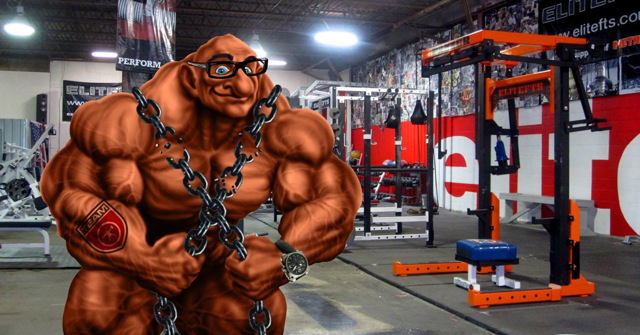
Shelby Starnes has a list of credentials longer than I have time to list right now, so instead I'll just say - for those of you that don't know him - he's an achieved bodybuilder. Recently, Shelby wrote an e-book, Simple Guide to Very Low Carb Diets. After reading his book, I must say it's a very simple and easy read that's packed full of great information. I'd recommend it to anyone that's trying to lose fat or are carb sensitive.
What got you interested in this style of dieting and is this what you are currently using?
Yes, I first started experimenting with very low carb diets in 1999. Since then, I’ve played around with a variety of diet styles and have learned how to optimize each. The very low-carb diet (VLCD) is a synthesis of the best of these approaches, but geared towards the carb-sensitive individual.
What foods are stocked in your refrigerator?
My fridge is kind of boring…lots of eggs, turkey breast, salmon, grass-fed beef, salad greens, almond and peanut butter. I also have a lot of diet drinks (flavored waters, diet soda, etc.) and consume tons of whey isolate and casein isolate protein powders. Other acceptable foods for this diet include lean proteins like chicken, tuna, shrimp, and other green vegetables like broccoli and asparagus. Healthy fats like extra virgin olive oil and macadamia nut oil are also important.
Who should use this diet?
Anyone who wants to drop fat and retain muscle. It’s usually not a good choice for an athlete though, at least not athletes that require a lot of endurance. It’s great for powerlifters and bodybuilders - sports that require short bursts of energy and also for more sedentary folk. It’s especially effective for those who consider themselves to be “carb sensitive.”
Are a great deal of your clients using this?
About half of my clients are using some variation of a very low carb diet. I’ll usually start off a client with a carb cycling diet first, and depending on results, may eventually transition them to a very low carb diet. It all depends on the individual and the situation; no two client diets are ever the same.
How does the diet work?
The basic premise is that by keeping carbohydrates low, you keep the hormone insulin low, which allows for maximal fat burning. Protein and fat levels are kept relatively high, to stave off catabolism and also serve as an energy source. Periodic refeeds are also used to stave off catabolism, stimulate metabolism and refill glycogen stores.
How does VLCD differ from the Atkins diet? How is it similar?
The Atkins diet is definitely a low-carb diet as well, but it doesn’t really discriminate much between the types of fat - saturated and unsaturated. This diet focuses primarily on the healthy fats – the mono and polyunsaturated ones. The Atkins diet doesn’t have a “refeed” either.
I see you get a cheat meal on this diet, very cool. Why the cheat meal?
The refeed / cheat meal is important for a number of reasons. First and foremost, it refills glycogen levels enough to sustain high intensity training through the week. It also serves to stimulate the metabolism, a problem many dieters experience in the form of the dreaded “plateau”. Lastly, it’s a great mental reward to look forward to after a strict week of dieting.
What is a healthy amount to lose per week?
Generally speaking, one to two pounds of fat loss per week is perfect. For larger individuals, 350 pounds and up, a rate closer to three to five pounds is a better weekly average. For smaller individuals,125 pounds and down, a half to one pound per week is good.
Shelby Starnes is one of Justin Harris / Troponin Nutrition’s premier nutritionists. Since joining Troponin in 2005 he has helped hundreds of athletes dial in their training, nutrition, and supplementation. Shelby has been involved in powerlifting and bodybuilding for over ten years, competing and placing very respectably in both. He holds a bachelor’s degree in psychology from Wayne State University and has written numerous articles on sports nutrition.
In his first bodybuilding competition he won the overall in the Novice division, and took 2nd place in the open middleweight class, thereby qualifying himself for national level competition. Since then he’s competed twice at the NPC Jr. Nationals, placing 5th in 2006 and 6th in 2007.










Low carb book . How can buy it
Thanks fiona